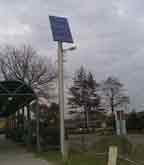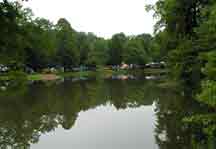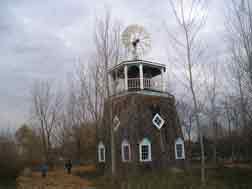Introduction
The United States is currently dependent on non-renewable energy sources. Energy is the ability to do work. We utilize stored potential energy, often in the form of chemical potential energy, to heat our homes and to run our cars. However, the oil and natural gas that we use is obtained from fossil fuels that are being used much more quickly than they are being replaced. They are produced by the combination of natural decay of plants and animals and underground pressure on this decaying material, and are therefore non-renewable. At the rate that we are going, we will use up all the fossil fuel one day.
In the U.S. alone, during the year 1999, 882.8 million tonnes of oil were used (25.5% share of world total usage), 37.706 quadrillion BTU. That comes to 18490 thousand barrels daily. During the same year, in the U.S. we used 617 billion cubic meters of natural gas (22.096 quadrillion Btu) and 543.3 million tonnes coal (21.698 quadrillion Btu, 25.5% of world total usage). (1)
However, in the same year in the U.S., we used only 0.327 quadrillion Btu Geothermal Energy, only 0.076 quadrillion Btu of Solar Energy, and only 0.038 quadrillion Btu of Wind Energy. (1)

The
Task
Imagine that the school you attend would like to do its part to help the environment and decrease its use of fossil fuels. It is your job to come up with realistic renewable energy alternatives that the school could use to help protect the environment. Create a PowerPoint presentation to present your recommendations to the Principal. You have to design a ten minute presentation to let the Principal know what alternative forms of energy are available. Include the following:
- energy related problem to be solved;
- defend why alternative forms of energy are desirable;
- product to be
used or designed---Why did you select a certain type of energy?;
- include your personal feelings about alternative energy use;
- create a summary page
Introduction | Task | Process | Evaluation | Conclusion | Credits | Teacher Page
The
Process
You will work in teams of two. To accomplish the
task, look at the online resources listed below. Make a summary table using Microsoft Word that lists each type of alternative energy, its benefits, its risks, estimated costs, and how our school can use each one (or why it can't be used). To create your summary table, add to the linked template.
(MS Word Template or
HTML version of Template)
Use this summary table as a guide when you create your PowerPoint presentation. Remember that the presentation should be used to promote the best type(s) of alternative energy that can be used by your school, so only mention the type(s) of alternative energy that you recommend to your school, and do not mention the types of energy that your school would not be useable by your school.
- First you'll be
assigned to a team of 2 students.
- Once you've
decided who will search the websites to gather information and who will fill in the summary table, you may begin to gather information about various forms of alternative energy from the websites listed below.
- What are the environmental reasons for choosing alternative energy over fossil fuels? List these environmental reasons on the template worksheet.
- How many different types of alternative energy were you able to find? Include the benefits, risks, estimated costs, and how each can or shouldn't be used by your school.
- Decide which form(s) of alternative energy would be most beneficial to your school.
- Create a 10-minute presentation in PowerPoint (minimum of 15 slides) to explain the benefits of using alternative energy vs. regular electricity and oil heat and how your recommended form(s) of energy can benefit the school and the environment. The first slide after the title slide should be a summary page.
Websites and Resources to Use:
U.S. Department of Energy-Wind and Hydropower Technologies Program Home Page
Sustainable Mobility Learning Lab
Global Warming Greenhouse Effect
US EPA Celebrates Earth Day
Fuel Cells 2000
Dr. E's Energy Lab
Solar Energy Facts
NFCRC: Fuel Cells Explained: Challenges
Cost Digest, Product 3, Fuel Cells
The True Cost of Electricity from Wind Power
Geothermal Cost
Hydroelectric Generators

Introduction | Task | Process | Evaluation | Conclusion | Credits | Teacher Page
Evaluation
Your performance will be evaluated based on the two rubrics below. Both grades will be averaged together. Each team member will receive his or own grade, based on group work, ideas, the presentation, and effort.
Students will receive between 1-4 points for each objective achieved based on the rubrics below.
PowerPoint Rubric:
14-16 Points = Excellent; 11-14 = Good; 5-11 = Needs Improvement
Information Gathering and Technology Use Rubric:
14-16 Points = Excellent; 11-14 = Good; 5-11 = Needs Improvement
Rubric for PowerPoint Presentation
| |
1 |
2 |
3 |
4 |
Score |
| Participation |
No one took responsibility for
the presentation. |
One member of the group lead
the entire presentation. |
Both members of the
group presented only part of the material. |
All students participated
equally in the presentation and presented all the material. |
|
| Presentation
clarity |
No organization, clarity, or
opinions. |
Presentation was not well
organized - thoughts and opinions are unclear. |
Presentations was somewhat
clear. Some ideas and opinions need to be refined. |
Presentation was clear and to
the point. Ideas and opinions are well prepared. |
|
| Time length of
presentation |
Between 0 and 4 minutes or more
than 20 minutes. |
Between 3 and 6 minutes or 13
and 17 minutes |
Between 6 and 9 minutes or 11
and 13 minutes |
Between 9 and 11 minutes |
|
| Students will be able to use PowerPoint to illustrate why a certain type or types of alternative energy could benefit the school using examples and visual aids. |
No visual aides such as photographs and/or animations were used in
the presentation.
The presentation did not encourage alternative energy use. |
The visual aids such as photographs and/or animations were briefly
referred to in the presentation and needed more work.
The presentation slightly encouraged alternative energy use. |
Appropriate visual aides such as photographs and/or animations were
used in the presentation.
The presentation somewhat encouraged alternative energy use. |
Organized and appropriate
visual aides such as photographs and/or animations incorporated into the presentation.
The presentation strongly encouraged alternative energy use. |
|
Rubric for Information Gathering and Technology Use
|
|
Beginning
1
|
Developing
2
|
Accomplished
3
|
Exemplary
4
|
Score
|
|
Students will show an understanding of why alternative energy is desirable.
|
Students will not be able to describe the advantages of alternative energy.
|
Students will describe the advantages of alternative energy in one to two sentences.
|
Students will describe the advantages of alternative energy in three sentences.
|
Students will describe the advantages of alternative energy is four or more sentences.
|
|
|
Students will be able to describe various forms of alternative energy and why they may or may not apply to their school.
|
Many descriptions are incorrect and there is no apparent evidence of critical thinking
|
Some descriptions are incorrect and there is very little evidence critical thinking has occurred. At least two sentences have been written.
|
Most descriptions are correct. Some critical thinking has occurred. At least three sentences have been written .
|
The descriptions are correct. Critical thinking skills are evident. There are at least four well-written sentences.
|
|
|
Students will interpret and synthesize information from nonprint media as demonstrated by being able to go through the website and to complete the worksheet.
|
Students will not know how to interpret synthesize information from nonprint media.
|
Students will interpret and synthesize some of the information from nonprint media.
|
Students will interpret and synthesize most of the information from nonprint media.
|
Students will interpret and synthesize all the information from nonprint media as demonstrated by being able to go through the website and to complete the worksheet.
|
|
|
Students will work cooperatively using technology as evidenced by completion of the activities.
|
Students will not move along and will get stuck, constantly asking for help. They will not be able to work cooperatively in their assigned groups of two.
|
Students will ask for occasional help before moving on to the next task. They will have trouble sharing the computer terminal.
|
Students will seldom ask for occasional help before moving on to the next task. They will have very little trouble sharing the computer terminal.
|
Students will move from step to step on their own and at their own pace. Students will work cooperatively using technology as evidenced by completion of the activities.
|
|
Introduction | Task | Process | Evaluation | Conclusion | Credits | Teacher Page
Conclusion
Congratulations! You have given the Principal several good ideas about how to use alternative energy to help save the environment, reduce our reliance on fossil fuels, and save money! You are doing your part to help protect our environment and to ensure that we will have useable energy for years to come!
Introduction | Task | Process | Evaluation | Conclusion | Credits | Teacher Page
Credits & References
1) Energy Action - EA Stats, Fuel Consumption Stats, http://www.nef1.org/ea/eastats.html
Last
updated on April 29, 2007 .
Based
on a template from The
WebQuest Page

|




